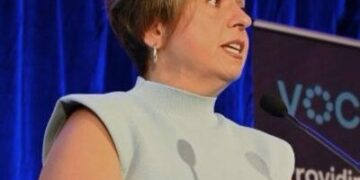Despite Snapchat’s new brand marketing campaign, it’s still the same old story for advertisers: they don’t know what to make of the platform.
A month after Snapchat launched its global riposte to social media with the strap line “Less likes, more Snapchat,” marketers have been left none the wiser as to whether this is going to ladder up into something for its ads business.
And it looks like they’re going to be waiting for a while yet.
That said, a Snapchat spokesperson told Digiday: “Our new ‘Less Social Media. More Snapchat.’ brand campaign is about helping consumers and marketers alike understand why Snapchat ranks as the #1 platform where people say they feel comfortable, happy and connected. We have been pairing this message with customized strategies to help our partners efficiently and effectively reach our global audience of over 800 million people, and have received very positive feedback since launch.”
Despite this, of the five ad execs Digiday spoke to for this article, most of them have yet to hear any pitch.
One U.K.-based agency exec, who wanted to remain anonymous, confirmed they had been given an informal heads up on Snapchat’s campaign, but no official briefing on the messaging.
Another executive chimed in: “We’re still waiting for any formal communication,” echoing sentiments from a U.S. ad executive at a performance agency, who admitted to seeking clarity from both Snapchat and their internal team.
The radio silence seems deliberate. Snapchat isn’t obligated to disclose everything to advertisers, but it’s also a missed opportunity. Launching a new campaign aimed at revitalizing Snapchat’s long standing claim of being unlike other social platforms could have been the perfect moment for a polished pitch to advertisers.
Let’s face it; they’re not exactly enamored with the platform, at least not enough to up their social budgets there. The failure to capitalize on this opportunity underscores one of Snapchat’s core dilemmas: it may need to emulate the very platforms it’s trying to distance itself from to break free from its rut.
“The problem is that Snap can say it’s not a social media platform, but it’s still competing for the same social ad dollars from investors and advertisers,” said Jasmine Enberg, principal analyst, social media at eMarketer. “We saw that in earnings and some of the messaging in this campaign seems to run somewhat contrary to some of the messaging that they’re giving to investors and advertisers.”
Talking numbers, Snap recorded a 5% quarterly revenue growth to $1.36 billion and flat annual revenue growth of $4.6 billion during its last earnings call in February — which isn’t terrible, but it’s certainly dwarfed by Meta (25% quarterly revenue growth to $40.1 billion and 16% annual growth to $134.9 billion) and the other tech titans.
In essence, Snapchat finds itself a square peg in a round hole. It resists conforming to the typical social media platform model, yet to succeed in advertising, it must align more closely with industry norms which include a focusing on more public facing spaces and widening its demographic (for reach) as well as improving its performance and analytics capabilities, as established by platforms like Meta.
Failure to do so risks continued hemorrhaging of ad dollars. Advertisers, comparing platforms like Meta and TikTok, don’t concern themselves with nuanced distinctions; they simply seek the best return on investment.
When it comes to the mobile messaging app, those advertisers often fall into two buckets.
On the one hand, there are advertisers that are all in, and invest — no questions asked. They simply see the value in Snapchat’s loyal audience and love what the messaging app stands for.
On the other hand, which is where the bulk of advertisers seem to sit, Snapchat remains a tier two platform at best.
Often their argument is, if they can get the same audience on TikTok, and with scale, why would they bother investing in Snapchat?
The disconnect is a sentiment that marketers have repeated to Digiday over the past 18 months, and again when reporting for this article.
While ad execs consistently praise the platform’s technological innovations, they’re confounded by the narrative around the business, lack of sophisticated measurement tools, and a perceived disconnect from the ad industry.
“I don’t see the root changes (yet) needed to the platform that will address what us on the agency-side need to see,” said another U.K.-based ad exec, who exchanged anonymity for candor. “I’d have loved to have seen a campaign like this come after they were in a strong position to show evidence of this approach working for them, for creators and for advertisers. I worry that doing it the other way round, that positioning themselves as ‘not social media’ may not age well.”
They may have a point.
Snapchat’s image problem appears to be more with advertisers than users.
One ad exec from a large U.K. advertising group, who confirmed that from a budget perspective Snap is a tier two platform for their agency because it’s a much harder sell to clients, said they believe the tier two categorization isn’t a fair reflection of the platform, the audience or the impact it can have. “Sometimes it is an effort versus reward consideration on our side,” they said. “And sometimes that reward is not worth the effort.”
Then there’s measurement. Sure, Snapchat has been working behind the scenes to better its direct response business, given it accounts for around two thirds of its revenue. This includes improving analytics advertisers get from Snapchat, investing in Estimated Conversions to better model ad performance, as well as improving the quality of results by focusing more on click-through conversions.
But again, when compared to Meta, Snapchat seems to be five steps behind.
“Large advertisers with econometric models often find that Snap performs impressively. But not all advertisers have access to such sophisticated measurement, relying instead on platform-metrics or lift studies for assessing campaign success,” said Samuel Redding, head of paid social at OMD. “This can lead to subjective interpretations of effectiveness due to the lack of cross-platform measurement solutions.”
So it’s hard, but not impossible, as some advertisers have proven.
“Snapchat’s unique and engaged audience is among the reasons we see advertisers spending on the channel,” said Laura Desmond, CEO of Smartly, who noted that incremental spend on Snapchat via Smartly has increased 100% year-over-year. “It comes as no surprise that 95% of the 300 brands polled in a recent Smartly/World Business Review survey are advertising on Snap.”
But when it comes to Snap’s relationship with advertisers, some of the bigger holding groups have noticed a bit of a disconnect. Executives at Snap sometimes seem to have a “big fish, small pond” mentality, which can make them less responsive to advertisers’ frustrations and how to address them. Time and again advertisers have stressed this point over the last several years.
But it’s not all bad news. Many advertisers still manage to have great relationships with the platform, despite these occasional hiccups. And of course, not everyone encounters these issues.
Redding, for example, highlighted how great the platform has been to work with, and how his agency hasn’t experienced any decline in service levels, despite the various pockets of layoffs that have continued to happen across the platform since last year as part of the tech industry’s course correction. In fact, he often receives tailored and bespoke client recommendations from Snap.
Still, Snap could be applauded for going into those meetings with an abundance of confidence given its predicament: it has very limited leverage in the market, especially compared to a platform like Meta, which consistently takes the lion’s share of ad dollars.
The numbers bring this into sharp focus.
“Snap’s Q4 earnings showed they need to do something if they want to keep users invested in their platform — and attract more users — which is what’s needed to re-engage advertisers, and grow ad revenue in turn,” said Amy Rumpler, svp of search and social media services at Basis Technologies. “If Snap’s campaign doesn’t work to influence users, I doubt advertisers will be influenced either.”
>>> Read full article>>>
Copyright for syndicated content belongs to the linked Source : DigiDay – https://digiday.com/marketing/advertisers-dont-see-new-immediate-value-in-snapchats-ad-offerings-despite-its-brand-marketing-campaign/?utm_campaign=digidaydis&utm_medium=rss&utm_source=general-rss

















![[News] China Makes Breakthrough in Chip Technology, Paving the Way for Lithography Advancements – TrendForce](https://earth-news.info/wp-content/uploads/2025/11/324664-news-china-makes-breakthrough-in-chip-technology-paving-the-way-for-lithography-advancements-trendforce-360x180.jpg)












